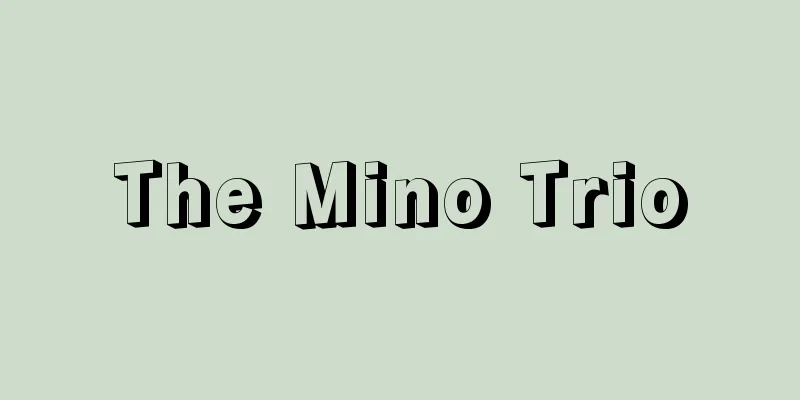Anthropology - ningengaku (English spelling) anthropology

|
The Japanese word jinngaku, along with the Japanese word anthropology, is originally a translation of "anthropologie." Anthropology was originally biological physical anthropology, but later cultural anthropology was considered a branch of anthropology alongside physical anthropology, and it has come to include social anthropology, psychological anthropology, and even educational anthropology alongside archaeology, ethnology, and folklore. On the other hand, anthropology, which studies human beings in philosophy, is translated as "anthropology," and this has always existed throughout the history of philosophy, but since Kant in the early modern period, the anthropological tendency has become stronger, and after Scheler and Plessner proposed philosophical anthropology in the early 20th century, coupled with the anthropocentric tendency in existential philosophy, psychological, sociological, and educational anthropology, which have developed from traditional cultural anthropology, are often translated as psychological anthropology, sociological anthropology, and educational anthropology today. For example, Gadamer and Vogler's co-edited book Neue Anthropologie (1972-75) contains six chapters, namely biological anthropology, cultural anthropology, social anthropology, psychological anthropology, and philosophical anthropology, according to the conventional translation of anthropology, but in recent years it has been translated under the title Lectures on Modern Anthropology. However, the word "anthropology" originally meant "philosophical anthropology," and it can be said that this direction remains central even today. [Shimizu Yoko] "Lectures on Contemporary Anthropology" edited by Gadamer and Vogler, translated by Yoshiaki Maeda et al., 7 volumes (1979, Hakusuisha) [Reference item] |Source: Shogakukan Encyclopedia Nipponica About Encyclopedia Nipponica Information | Legend |
|
日本語の人間学は、日本語の人類学とともに、本来、「アントロポロギー」の訳語である。 アントロポロギーは、初め生物学的な自然人類学であったが、のちに文化人類学が自然人類学と並ぶ人類学の一分野とされ、そこには、考古学、民族学、民俗学と並んで、社会人類学、心理学的人類学、さらには教育学的人類学まで含まれるようになってきた。他方、哲学において人間を研究するアントロポロギーは、「人間学」と訳され、これは哲学史とともにつねに存在してきたが、とりわけ近世のカント以来、人間学的傾向が強くなり、20世紀初めにシェラー、プレスナーによって哲学的人間学が提唱されてのち、実存哲学における人間中心的傾向と相まって、従来の文化人類学から展開してきた心理学的・社会学的・教育学的人類学も、心理学的人間学、社会学的人間学、教育学的人間学という訳語があてられることも、今日しばしば見受けられるようになっている。 たとえば、ガダマーとフォーグラーの共編になる『Neue Anthropologie』(1972~75)は、アントロポロギーの従来の訳語に従えば、生物学的人類学、文化人類学、社会人類学、心理学的人類学、哲学的人間学という六編を含むものであるが、これが近年、『講座現代の人間学』という題名の下に訳出されているなどは、その一例である。しかし「人間学」の語は本来、「哲学的人間学」を意味してきたし、現在もその方向が中心的であるといえる。 [清水窕子] 『ガダマー、フォーグラー編、前田嘉明他訳『講座 現代の人間学』全七巻(1979・白水社)』 [参照項目] |出典 小学館 日本大百科全書(ニッポニカ)日本大百科全書(ニッポニカ)について 情報 | 凡例 |
<<: Human relations - ningen kankei (English spelling)
Recommend
Six Writings - Rikusho
This explains the composition and use of Chinese ...
Proximate evidence
…When it comes to circumstantial evidence, the is...
Longford, JH (English spelling) LongfordJH
...However, it was not until HS Parkes took up hi...
Mandibular breathing - science
This refers to breathing that sounds like gasping...
Equine paratyphoid
A general name for diseases caused only in horses ...
Thumb Taro - Oyayubi Taro
An old tale about a small child the size of a fing...
Ise Castle
This area occupies the central part of the Nara B...
airborne warning and control system
...On the other hand, taking advantage of the fac...
Iroquois-type kinship names - Iroquois-type kinship names
…(2) Eskimo-type kinship nomenclature: Cross cous...
Inner garden
〘 noun 〙 A garden located in the back of a mansion...
Jakarta - Jakarta (English spelling)
The capital of Indonesia. It is located at the mo...
Yoshikata Kiyohara
Year of death: October 29, 1432 (November 21, 1432...
sweet rush
…It is a summer-green perennial plant of the Arac...
Saxifraga acerifolia (English spelling) Saxifragaacerifolia
… [Michio Wakabayashi]. … *Some of the terminolog...
Parulidae
…A general term for birds belonging to the Paruli...









